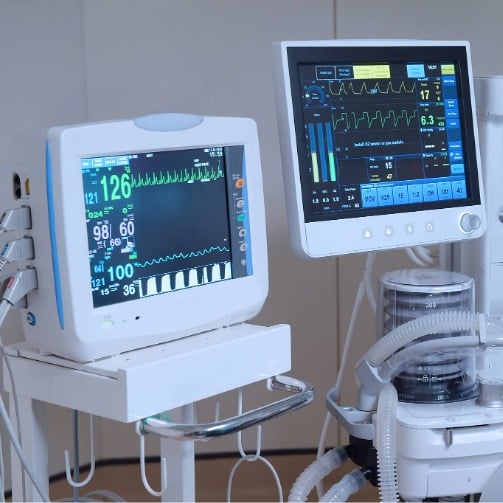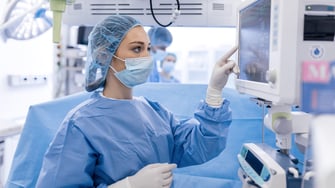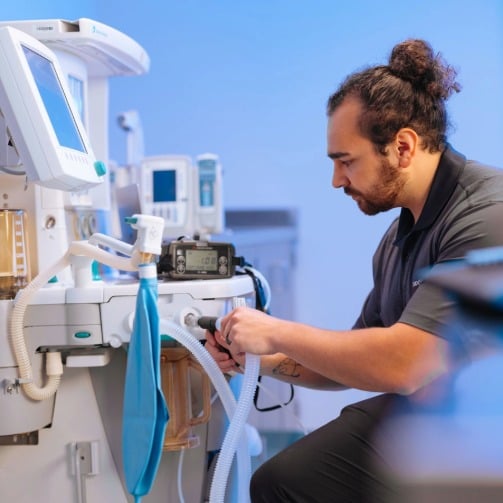Healthcare
Why Medical Device Cybersecurity and RTLS Are Essential to the Future of Healthcare Operations

 The Healthcare Technology Management (HTM) landscape is changing rapidly, requiring HTM teams to be agile and adaptable. Additionally, the scope of managing medical devices today has expanded significantly, requiring skills and expertise in data analytics, networking, device integration, cybersecurity, strategic planning and risk management. Modern HTM also requires staff to have more professional services skills beyond their highly technical backgrounds.
The Healthcare Technology Management (HTM) landscape is changing rapidly, requiring HTM teams to be agile and adaptable. Additionally, the scope of managing medical devices today has expanded significantly, requiring skills and expertise in data analytics, networking, device integration, cybersecurity, strategic planning and risk management. Modern HTM also requires staff to have more professional services skills beyond their highly technical backgrounds.
Labor and training
With healthcare organizations facing widespread labor shortages for the past several years, hospital human resources teams are focused on recruiting and retaining clinical staff that have a direct impact on patient care. Biomedical service professionals, however, require different recruiting strategies than that of direct care givers.
Equipment utilization and technology advancements
As hospital budgets become tighter, obtaining additional funding for capital equipment becomes more challenging. One of the key functions of the HTM team is to properly maintain and service the medical devices to optimize longevity and maintain safety standards of the equipment. Creating a strategic capital plan allows capital budgets to be allocated towards additional equipment if needed and newer technologies.
Regulatory
Medical device regulations are evolving. Examples such as hand-held ultrasound are disrupting the use-cases, safety considerations, hospital policies, and service strategies. Continuous evolution of standards and regulations such as JCO inclusion of cybersecurity requirements, changes in FDA oversight of medical device cybersecurity, and the Right to Repair movement all require HTM teams to keep a continuous pulse on industry standards.
Original Equipment Manufacturers
OEMs (Original Equipment Manufacturers) often include clinical software upgrades as part of their service contracts for imaging and high-end biomedical equipment, which are not provided for free. Some of these upgrades are crucial for maintaining optimal functionality and ensuring compatibility with evolving clinical practices, but others are unnecessary. With the right tools in place to discern what upgrades are needed when, HTM teams can avoid additional costs to the hospital system.
As more hospital healthcare technology management services teams struggle to keep up with these changes, many are looking to Independent Service Providers (ISO) to help bring a more strategic and consultative layer to their services leading to these benefits.
Cost savings
Healthcare requires numerous resources with a wide variety of expertise. Partnering with an ISO can help reduce facility management services, accounts payable and even direct caregivers of administrative burdens. In fact, purchased services can help hospitals save 10-15%.
Resources and expertise
An ISO can offer a highly trained HTM team to manage equipment through its full lifecycle. Sodexo HTM establishes governance to work with key stakeholders within healthcare organizations (CNO, CIO, Facilities, Laboratories, Radiology, etc.) and become their trusted advisor. Quarterly Business Reviews and expectations meetings are part of the Sodexo signature and will align our priorities to yours.
Proactive approach
On average, a hospital can expect to save more than 20% annually on their equipment service with an ISO. A partner that is vendor agnostic can repair and maintain, source parts, and coordinate proper service updates for equipment from a variety of manufacturers. This enables a more proactive approach that helps extend equipment life, thereby reducing unexpected expenditure and freeing up capital to be allocated to other projects.
True partnership
ISOs can prioritize equipment maintenance with a focus on ensuring uninterrupted patient care, remaining free of the pressures faced by OEMS to sell additional equipment and software. By considering factors beyond equipment end-of-life date, ISOs can prolong the life equipment they can also align and purchase clinical software upgrades based on the needs of the organization, rather than by purchasing upgrades up front that may not be needed.
Having an HTM partner that alleviates administrative burdens, stays current with industry changes, and can provide trustworthy consultation and up-to-date, quality service is key.
Sodexo has a strong network of qualified, highly trained technical professionals for both biomedical engineering and imaging management. Our staff are on site to ensure equipment is available and when failures occur, can diagnose, repair, and return equipment to the clinicians for use quickly. Localization of our resources on the client sites is what enables our clients’ organizations optimal equipment usage. Our processes are designed to help drive savings and improve service delivery to your clinical team and the patients that you serve.
Contact us today to discuss the opportunities surrounding your current program and the best option for your organization in a non-biased, neutral manner. Learn more about our healthcare services.
Why Medical Device Cybersecurity and RTLS Are Essential to the Future of Healthcare Operations

Debunking Diabetes Diet Myths: What Healthcare Professionals Should Know

Strengthening Nutrition Care: Tackling Workforce Challenges Through Teamwork and Innovation

When Medical Equipment Management Becomes a Patient Safety Issue: Rethinking HTM’s Role in Hospital Performance
